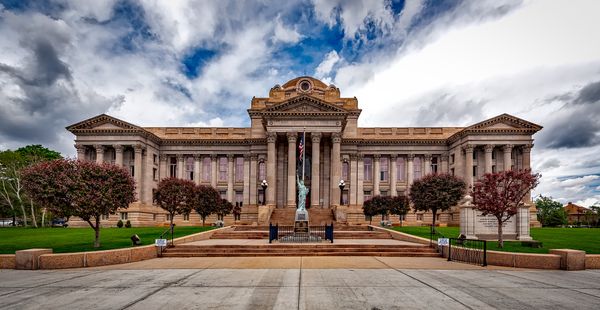When the British Empire collapsed, football remained integral to British society. A product of the working-class industrial Britain, football was and still is the game of the people. The sport is a complex phenomenon with community resemblances to different cultural forms but identical to none. Since the advent of the English Premier League, principal aspects of the match day experience at Southampton Football Club have been remodeled. From changes in crowds and infrastructure to the advancement of technology, transformations have been reflected in society of Southampton as a whole.
Despite not receiving city status by the Queen until 1964, Southampton has been a significant regional center for centuries due to its ideal geographic location on the south coast of England. Primarily used as a port for cruise ships, Southampton handled almost half the passenger traffic of the UK during the inter-war years. As a major commercial port and industrial area where docklands continue to expand, docks still provide a substantial amount of the city’s employment. In the later half of the 20th century, Southampton’s economy began to diversify and expand, ranging from aircraft and car manufacture to cables, electrical engineering products, and petrochemicals. Unlike other ports, such as Liverpool, London, and Bristol ,where a larger part of industries and docks have been moved out of city centers for redevelopment, Southampton has maintained a lot of its inner-city industry. The latter developed industries exist alongside the city's historic industries of the docks, grain milling and tobacco processing. Today, Southampton is nonetheless known for its world-class port as home to numerous luxury cruise ships and is one of Europe’s most productive harbors. Furthermore, Southampton is now also very strong in the health and education sectors, where just over a quarter of the jobs available in the city now are found. For example, the University Hospital Southampton NHS Foundation Trust is one of the largest city employers, and the University of Southampton that is in the top percent of universities worldwide. Through exploiting and building upon their distinct port abilities, Southampton has been able to create a society where both industrial history and new economic growth can thrive.
The biggest change Southampton Football Club encountered since the advent of the Premier League has been the crowd. With Southampton’s economic growth and expansion came a change in the city’s demographic makeup. Since the establishment of the Premier League, the demographic makeup change of the city of Southampton has reflected strongly on the average match day crowd in the Premier League. In 1991, one year before the foundation of the Premier League, the general population of Southampton had a majority of young working males in their 20s. Since then, the population percent of the city’s youth and working age has decreased, and the population percent of the elderly has only increased. In comparison, match day crowds in Premier League football matches have shown that predominant older males have replaced the younger male crowd, with an increase of females as well. In industrial Britain, the majority of the crowd consisted of the younger working class, who expressed escapism through football. But now, the crowd at a Premier League match consists predominantly of middle class workers and the older generation, who retain a deep attachment to club and locality. Despite the general consensus that stadiums lack the same ecstatic atmosphere fans once provided, Southampton FC has had a very consistent match day attendance since the establishment of the Premier League, with fans singing the same songs, such as “Oh When the Saints Go Marching In.” With the exception of a few years, the average attendance on match day for Southampton FC has been relatively high to stadium capacity. Due to the fact that Southampton has kept its inner-city industry, has an increase in the loyal elderly crowd, and a consistently high average match day attendance, the Southampton community is quite a faithful one. History, both on and off the pitch, is part of their making. As sports journalist David Golblatt writes in his book, "The Ball Is Round," “Until broadcasters can perfect a digitally enhanced crowd, there is no spectacle without them.”
With the application of new technology along with the accelerating economy, the Southampton match day experience was transformed. Based in Southampton, Hampshire, Southampton Football Club was founded as St. Mary's Church of England Young Men's Association by a church football team in 1885, nicknamed “The Saints.” In 1898, the club moved to their first home stadium, called The Dell. With an original capacity of just over 15,000 people, The Dell was where the community would come together for a single sporting event at the home of the club for over the next decade. A walking distance from the city center, The Dell was a classic 1900s rectangle-shaped stadium with bench seats, standing areas, and hotdog stands. It was the host of a majority of the club’s history, from the east stand being burned down in 1928, being hit by German bombs in 1940, becoming the first ground in England with permanent floodlighting installed in 1950, witnessing league promotions and demotions, to the final competitive goal scored by Southampton’s very own Matthew Le Tissier against Arsenal in 2001.
With the lowest capacity in first division football, The Dell was considered a monument of the past and no longer adequate. As a result, St. Mary’s Stadium was built in 2001, costing a total of 32 million pounds. With a capacity of over double The Dell’s, Saint Mary’s Stadium became the largest stadium in South England, not including London. With stadium improvements such as being shaped like a bowl, stands at equal height, translucent panels, two large TV screens at each end of the stadium, 42 executive boxes, club offices, changing rooms, hospitality suites, and more, St. Mary’s Stadium acted as a reflection of its city’s constructive growth. The advancement of technology and the establishment of the English Premier League proved to be a major turning point for the club, and only added more to the already growing Southampton economy. Money started to be heavily invested in the Premier League, which influenced how clubs interacted and presented their selves to fans. Things such as an in-stadium store with all the latest gear and accessories, new restaurants for the ever-changing appetite of the fans, a mascot, higher quality facilities, and in-game commentary were things that had never been so important before, but now became principal aspects of the match day experience. Press facilities for media became crucial for outreach by providing fans with the newest updates and news across the world. Transportation also changed. In the modern era, with an increased population, Southampton is known for its ridiculous traffic. To adjust to the shift in society, there are parking structures for the high number of motor vehicle commuters, because fans no longer prefer walking, biking, or taking public transportation, especially with the city constantly expanding in size. In addition, the stadium even has a police control room for security. Before, hooligans would streak the pitch and fights would break out. But now crime and such antics are rare.
With the new commercialism, football lead to the death of industrial Britain and the working-class world. From changes in crowds and infrastructure to the advancement of technology, transformations have been reflected in society of Southampton as a whole. Southampton has not ditched its olden days, but rather, the city and the club have both built upon their historic roots by creating a more modern British society and match day experience at the same time. Match day in Southampton has been changed forever.





















